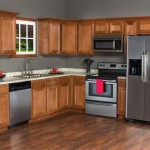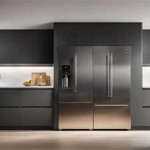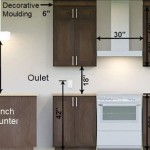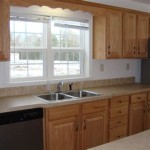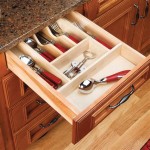How To Spruce Up Old Wood Kitchen Cabinets
Kitchen cabinets often form the visual cornerstone of the kitchen. Over time, however, these cabinets can become worn, dated, or simply faded. Fortunately, revamping old wood kitchen cabinets is a viable alternative to expensive replacement, offering a cost-effective way to refresh the heart of the home. This process involves a series of steps, from thorough cleaning and preparation to choosing the right finish and applying it effectively. The following details the necessary procedures to revitalize existing wood kitchen cabinets.
Preparation: Cleaning and Assessment
The initial stage in sprucing up old wood kitchen cabinets centers on thorough cleaning and careful assessment. Accumulated grease, grime, and dust can obscure the true condition of the wood and hinder the adhesion of any subsequent finishes. Therefore, a rigorous cleaning process is essential.
Begin by removing all hardware, including knobs, pulls, and hinges. Store these items in a safe place to prevent loss. Next, detach the cabinet doors and drawers from the cabinet frames. This allows for easier access and a more even application of cleaning and finishing products. Laying down drop cloths or plastic sheeting will protect surrounding surfaces from spills and splatters.
Use a degreasing cleaner specifically designed for kitchen environments. Apply the cleaner to the cabinet surfaces, both inside and outside, following the manufacturer's instructions. A soft cloth or sponge is suitable for general cleaning. For stubborn grease or grime, a scrub brush with soft bristles may be necessary. Pay particular attention to areas around handles and stovetops, as these tend to accumulate the most buildup.
After cleaning, thoroughly rinse the cabinets with clean water to remove any remaining cleaner residue. Allow the cabinets to dry completely before proceeding to the next stage. This drying process might take several hours or even overnight, depending on humidity levels.
Following the cleaning and drying process, carefully assess the condition of the wood. Look for signs of damage, such as scratches, dents, chips, or water stains. Identify any areas where the existing finish is peeling, cracking, or otherwise deteriorating. This assessment will inform the necessary repair and preparation steps.
Minor scratches and dents can often be addressed with wood filler. Larger damages might require more extensive repairs. If the cabinets have suffered water damage, it is crucial to address the underlying cause to prevent further deterioration. Mold or mildew growth should also be treated with appropriate cleaning solutions.
Surface Preparation: Sanding and Priming
Once the cabinets are clean, dry, and any necessary repairs have been made, the next step involves preparing the surface for a new finish. Sanding is a crucial step in this process, as it creates a smooth, even surface that allows the new finish to adhere properly. Priming further enhances adhesion and provides a uniform base for the topcoat.
Begin by selecting the appropriate sandpaper grit. For removing old finish or smoothing rough surfaces, a medium-grit sandpaper (around 120-grit) is generally recommended. For finer sanding and smoothing, a fine-grit sandpaper (around 220-grit) can be used. Always sand in the direction of the wood grain to avoid scratching the surface.
Use a sanding block or orbital sander to evenly sand the cabinet surfaces. Pay attention to corners and edges, as these areas tend to be more difficult to sand. Remove all traces of the old finish, ensuring that the surface is smooth and free of imperfections. After sanding, thoroughly wipe down the cabinets with a tack cloth to remove any sanding dust.
The choice of primer depends on the type of finish that will be applied. For example, if the intention is to paint the cabinets, a stain-blocking primer is recommended to prevent tannins from the wood from bleeding through the paint. Oil-based primers offer excellent adhesion and durability but require mineral spirits for cleanup. Latex primers are water-based and easier to clean up but may not be as effective on certain types of wood.
Apply the primer evenly to the cabinet surfaces, following the manufacturer's instructions. Use a brush, roller, or sprayer, depending on the type of primer and personal preference. Allow the primer to dry completely before proceeding to the next step. This drying time may vary depending on the humidity and temperature.
After the primer has dried, lightly sand the surface with a fine-grit sandpaper to remove any imperfections or brush marks. Wipe down the cabinets again with a tack cloth to remove any sanding dust. The cabinets are now ready for the final finish.
Applying the New Finish: Painting or Staining
The final stage involves applying the chosen finish to the prepared cabinet surfaces. The two most common options are painting and staining, each offering a distinct aesthetic and requiring different application techniques.
Painting provides a wide range of color options and can completely transform the look of the kitchen. Choose a high-quality paint specifically designed for kitchen cabinets. Acrylic latex paints are a popular choice due to their durability, ease of cleanup, and low odor. Alkyd paints offer a harder, more durable finish but require mineral spirits for cleanup.
Apply the paint in thin, even coats, allowing each coat to dry completely before applying the next. Using multiple thin coats is preferable to one thick coat, as it minimizes the risk of drips and ensures a more even finish. A brush, roller, or sprayer can be used to apply the paint. If using a brush, choose a high-quality brush designed for use with the chosen type of paint. If using a roller, use a foam roller to minimize brush marks. A sprayer provides the most even finish but requires practice and proper ventilation.
Staining enhances the natural beauty of the wood and allows the grain to show through. Choose a stain color that complements the existing décor and the overall style of the kitchen. Oil-based stains penetrate deeply into the wood and provide a rich, durable finish. Water-based stains are easier to clean up and have a lower odor but may not be as durable.
Apply the stain evenly to the cabinet surfaces, using a brush, cloth, or sponge. Allow the stain to penetrate the wood for the recommended amount of time, as specified by the manufacturer. Wipe off any excess stain with a clean cloth. The longer the stain is allowed to penetrate, the darker the color will be.
After the stain has dried completely, apply a clear topcoat to protect the finish and enhance its durability. Polyurethane is a popular choice for kitchen cabinets due to its resistance to water, scratches, and stains. Apply the topcoat in thin, even coats, allowing each coat to dry completely before applying the next. A brush, roller, or sprayer can be used to apply the topcoat.
Once the final coat of paint or topcoat has dried completely, carefully reattach the hardware and reinstall the cabinet doors and drawers. Ensure that all screws are tightened securely. Clean any spills or splatters that may have occurred during the finishing process. Allow the cabinets to cure for the recommended amount of time before using them. This curing period allows the finish to harden and become more resistant to damage.
Proper ventilation is critical throughout the entire process, particularly when working with paints, stains, and solvents. Wear appropriate safety gear, including gloves, eye protection, and a respirator, to protect against exposure to harmful chemicals.
By following these steps carefully, any homeowner can successfully spruce up their old wood kitchen cabinets, enhancing the look and value of their kitchen without the expense of a full replacement.

15 Diy Kitchen Cabinet Makeovers Before After Photos Of Cabinets

How To Re Wood Cabinets Trends Finishing

How To Clean Kitchen Cabinets Everyday Skate

15 Diy Kitchen Cabinet Makeovers Before After Photos Of Cabinets

5 Ideas To Repaint Rebecca S Faded Wood Kitchen Cabinets Retro Renovation

For Those Who Kept Their Old Kitchen Cabinets Pics

What To Do With Old Kitchen Cabinets

15 Diy Kitchen Cabinet Makeovers Before After Photos Of Cabinets
Refinishing Kitchen Cabinets A Beautiful Mess

What To Do With Oak Cabinets Designed Kitchen Remodel Renovation Decor
Related Posts


